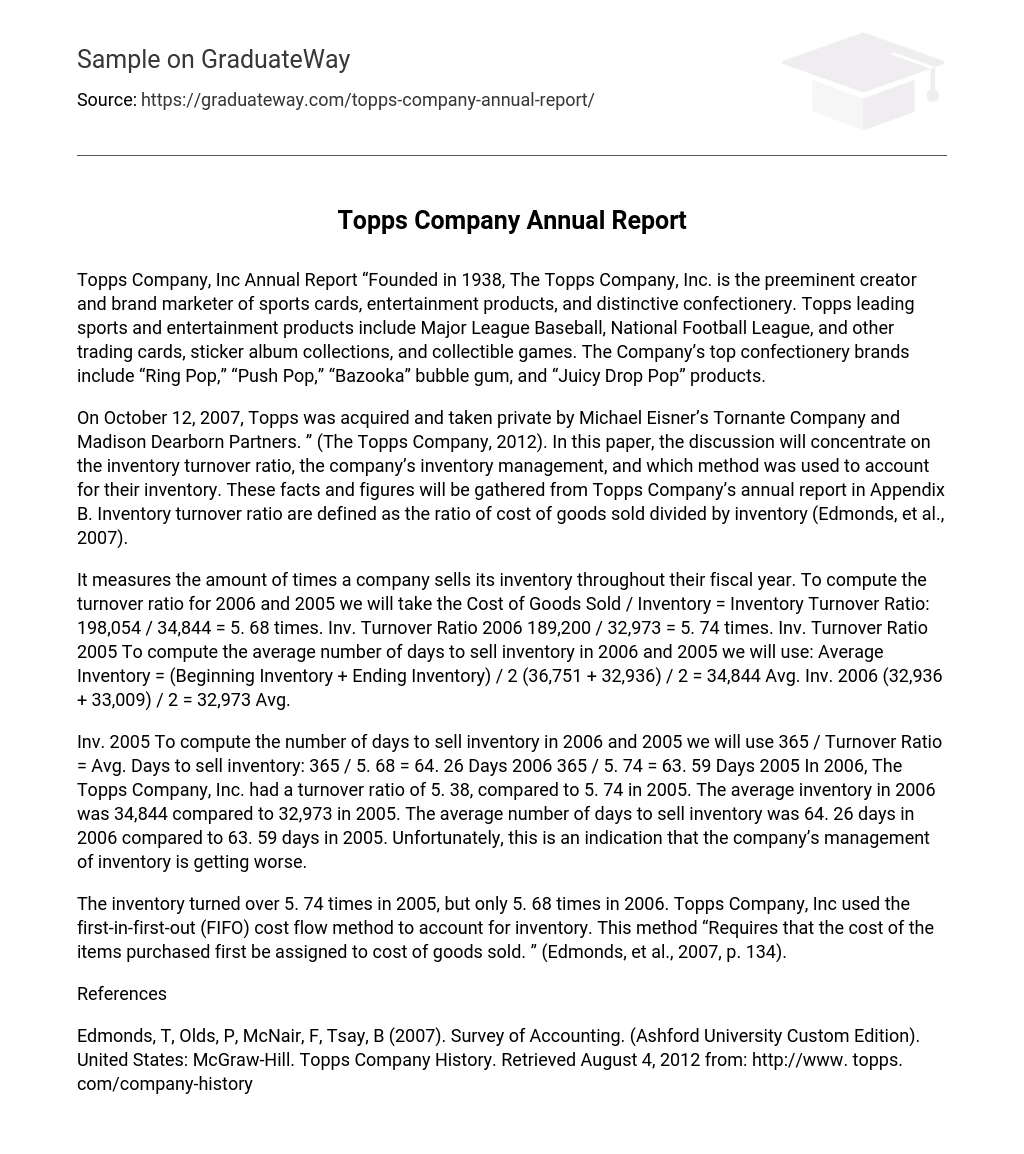Topps Company, Inc Annual Report “Founded in 1938, The Topps Company, Inc. is the preeminent creator and brand marketer of sports cards, entertainment products, and distinctive confectionery. Topps leading sports and entertainment products include Major League Baseball, National Football League, and other trading cards, sticker album collections, and collectible games. The Company’s top confectionery brands include “Ring Pop,” “Push Pop,” “Bazooka” bubble gum, and “Juicy Drop Pop” products.
On October 12, 2007, Topps was acquired and taken private by Michael Eisner’s Tornante Company and Madison Dearborn Partners. ” (The Topps Company, 2012). In this paper, the discussion will concentrate on the inventory turnover ratio, the company’s inventory management, and which method was used to account for their inventory. These facts and figures will be gathered from Topps Company’s annual report in Appendix B. Inventory turnover ratio are defined as the ratio of cost of goods sold divided by inventory (Edmonds, et al., 2007).
It measures the amount of times a company sells its inventory throughout their fiscal year. To compute the turnover ratio for 2006 and 2005 we will take the Cost of Goods Sold / Inventory = Inventory Turnover Ratio: 198,054 / 34,844 = 5. 68 times. Inv. Turnover Ratio 2006 189,200 / 32,973 = 5. 74 times. Inv. Turnover Ratio 2005 To compute the average number of days to sell inventory in 2006 and 2005 we will use: Average Inventory = (Beginning Inventory + Ending Inventory) / 2 (36,751 + 32,936) / 2 = 34,844 Avg. Inv. 2006 (32,936 + 33,009) / 2 = 32,973 Avg.
Inv. 2005 To compute the number of days to sell inventory in 2006 and 2005 we will use 365 / Turnover Ratio = Avg. Days to sell inventory: 365 / 5. 68 = 64. 26 Days 2006 365 / 5. 74 = 63. 59 Days 2005 In 2006, The Topps Company, Inc. had a turnover ratio of 5. 38, compared to 5. 74 in 2005. The average inventory in 2006 was 34,844 compared to 32,973 in 2005. The average number of days to sell inventory was 64. 26 days in 2006 compared to 63. 59 days in 2005. Unfortunately, this is an indication that the company’s management of inventory is getting worse.
The inventory turned over 5. 74 times in 2005, but only 5. 68 times in 2006. Topps Company, Inc used the first-in-first-out (FIFO) cost flow method to account for inventory. This method “Requires that the cost of the items purchased first be assigned to cost of goods sold. ” (Edmonds, et al., 2007, p. 134).
References
Edmonds, T, Olds, P, McNair, F, Tsay, B (2007). Survey of Accounting. (Ashford University Custom Edition). United States: McGraw-Hill. Topps Company History. Retrieved August 4, 2012 from: http://www. topps. com/company-history





